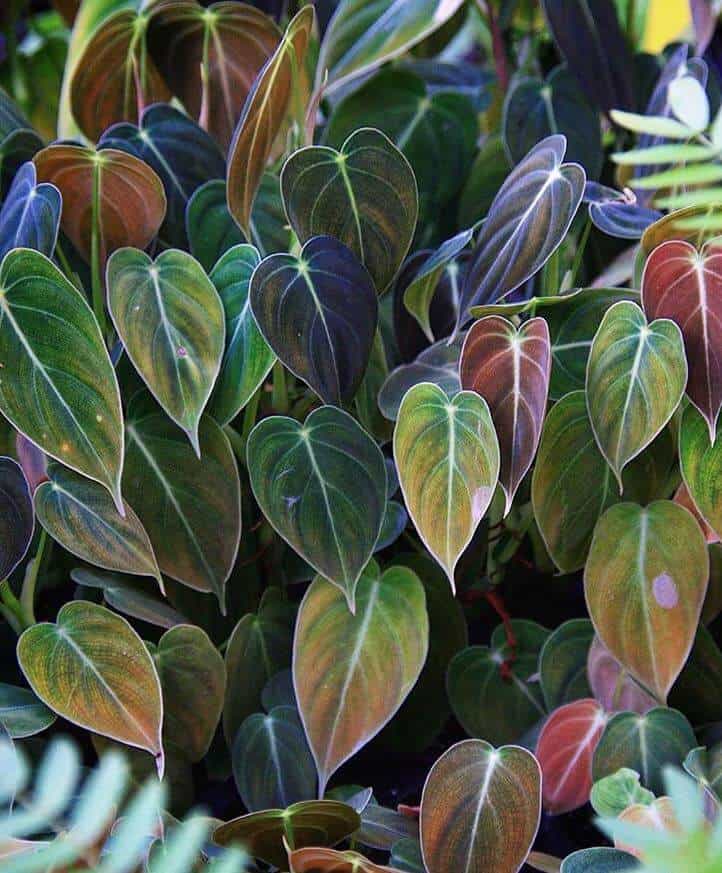Last Updated on March 5, 2023 by a Friendly Gardener
There are numerous varieties of Philodendron, but one, in particular, stands out the Paper Gold Black Philodendron. Philodendrons can be either vining or non-climbing plants. This unique variety is a lovely houseplant that requires limited care, making it ideal for both home and office. Belonging to the Araceae family, it originates in South America in Colombia. The unique name reflects the characteristics of the leaves which can appear black or golden.
The plant boasts large, heart-shaped foliage and will grow to an average of between 3 and 6 feet when cultivated indoors. Outdoors this plant can reach lengths of more than 10 feet. Leaves can grow as large as two to three feet in optimal environmental conditions.
Paper Gold Black Philodendron Plant Care
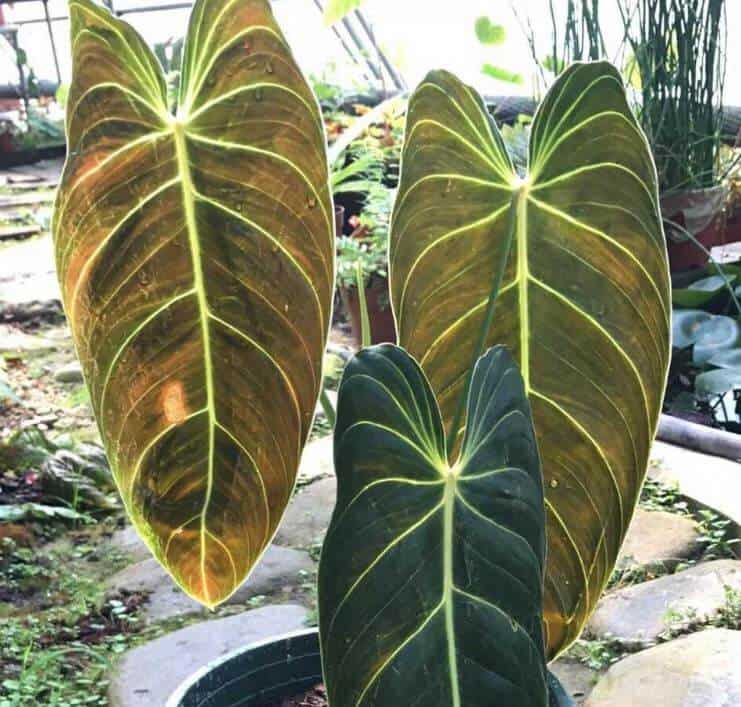
Caring for a Paper Gold Black Philodendron is relatively easy, despite its tropical nature. It is adaptable to various environments. Moderate water, sufficient light, and a proper growing medium will support the plant’s growth habit.
Soil
Select a rich, fertile soil blend that offers exceptional drainage for your plant. Many experts recommend using sphagnum peat moss. If you opt for potting soil, amend it with organic matter. You may want to add in perlite or pumice to guarantee sufficient drainage. A possible blend is one-part peat moss, one-part potting soil, and one-part perlite. Philodendrons appreciate soil that is lightly acidic with a pH between 5 and 6.
Light
The paper Gold Black Philodendron grows best in moderate light, or bright indirect light. This plant should not be exposed to direct sunlight as this can cause foliage to yellow or scorching. One great thing about this philodendron is its ability to adapt to low-light environments. However, continually insufficient light can interfere with plant growth. Indoor grow lights are another possibility for sustaining your plant’s growth cycle.
Water
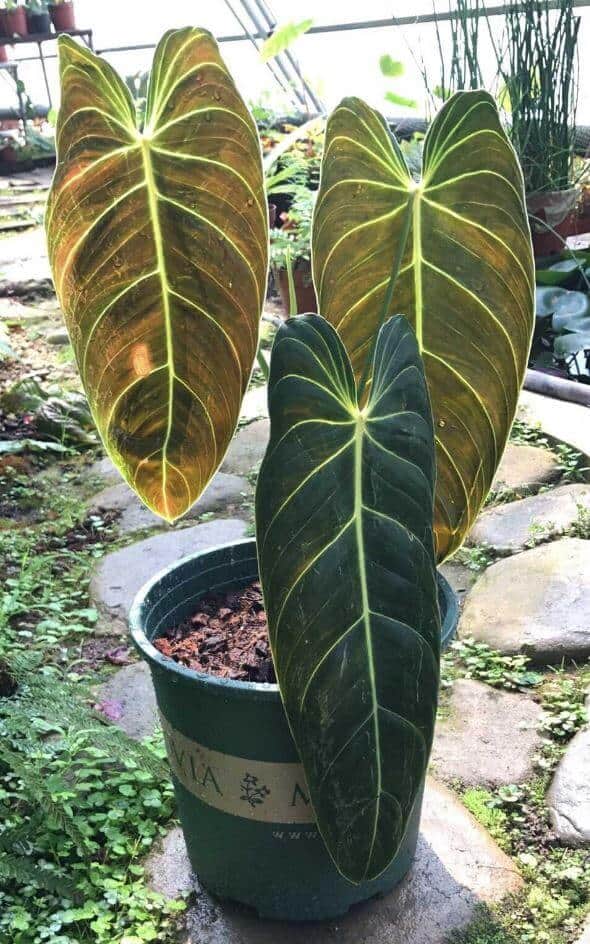
Philodendrons are susceptible to root rot when overwatered. Moderate watering when topsoil has dried is ideal. Should leaves turn brown you will know your plant is thirsty and requires more water. Another indication of inadequate or excessive watering is when foliage withers. Collected rainwater is optimal for watering necessities.
Humidity
Humidity is beneficial to this philodendron species as it originates in South American wet environments. Keep humidity above 60%. If your home or office has lower humidity, consider placing a pebble tray underneath the plant or using a space humidifier. You can also group several houseplants to create a microclimate, raising the humidity in the immediate area of their location.
Temperature
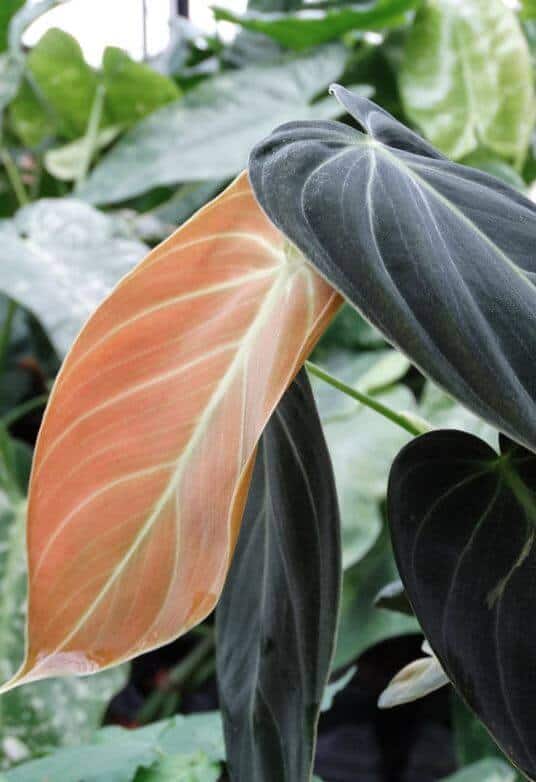
Paper Gold Black philodendrons thrive in normal home temperatures. As a tropical plant, temps ranging from 70° to 80° F. are ideal. Do not expose your plant to temperatures that drop below 60°F.
Feeding
While not a heavy feeder, the Paper Gold Black philodendron will benefit from feeding during the growing season in spring and summer. Avoid feeding in the winter. To boost your plant’s growth, use a liquid fertilizer that has a higher nitrogen content.
Pruning
Regular trimming can aid in thwarting your plant from becoming leggy. Prune in spring and summer to stimulate branching.
Repotting a Paper Gold Black Philodendron
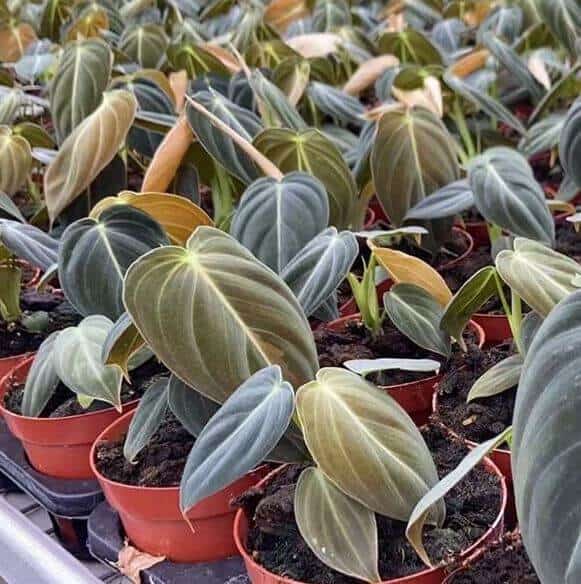
This philodendron does not require repotting annually. However, when roots begin to peek out of drainage holes, it’s time to repot. If growth begins to slow and your philodendron appears sluggish, this can be a sign that repotting is necessary. Depending on the size of the root ball, you may be able to use the same pot and just change the soil.
Paper Gold Black Philodendron Pests and Problems
While not specifically susceptible to pest infestations, it’s a good idea to keep an eye out for mealybugs, fungus gnats, and spider mites which commonly affect indoor houseplants.
The philodendron, like many houseplants, is at risk for root rot. When there is no intervention, it can be fatal for your plant. This fungal infection appears due to excessive watering. When roots are left to stand in soggy or waterlogged soil, they will not receive adequate aeration and oxygen. Your plant will gradually drown and rot. Excessive water can be due to overwatering or a lack of drainage. Over-sized plant pots can also contribute as excess soil can retain more water than necessary.
If you suspect root rot, unearth your plant, and check for signs. Roots should appear light in color and firm. You will need to intervene if they are brown, mushy, and emit an odor. Rinse the root system and trim off all infected roots. Treat the root system with a fungicide and repot it in fresh soil. Wait several days to water. If you must prune a substantial portion of the root system, consider pruning your plant at least a third to reduce stress to the root system.
Yellowing leaves generally indicate excessive watering. They should be removed. Brown leaves indicate a health problem and can be due to excessive sunlight exposure or a lack of moisture. In the case of an otherwise healthy plant, it may be natural aging.
Leaf drop indicates overwatering, while drooping foliage may be a sign of root rot.
Large foliage also requires occasional dusting to facilitate the plant’s transpiration.
Paper Gold Black Philodendron Propagation
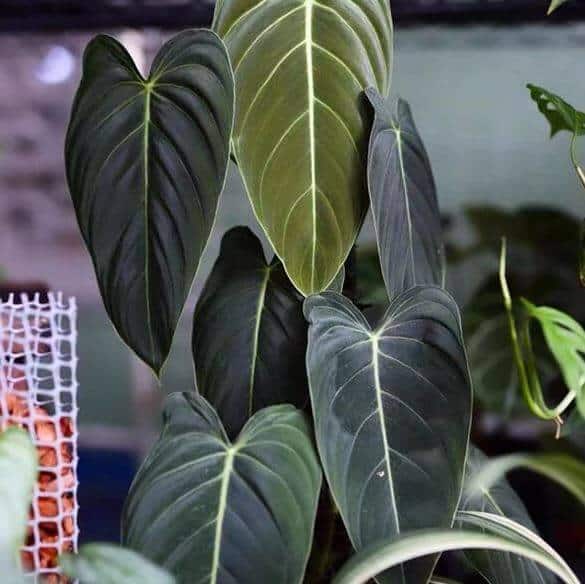
The most successful methods for propagation are using stem cuttings or air layering. Stem cutting requires that you trim several stem cuttings from a healthy plant that are two to four inches long. Each cutting should have a longer section above a node and at least two leaves. Place the cuttings in a warm location until they develop callouses. Place the calloused end into a fresh growing medium and place it in a spot with moderate light.
To air layer, wrap sphagnum moss around a leaf node and then with plastic wrap to ensure adequate humidity for root growth. Once roots develop from the node, snip it off and transplant it into a container with soil.
Paper Gold Black Philodendron Toxicity
Unfortunately, this houseplant contains calcium oxalate, so it is toxic to humans and family pets if ingested. It should be kept out of the reach of small children and family pets. The ingestion of calcium oxalate crystals can lead to burning and blisters in the mouth and throat, excessive salivation, nausea, vomiting, and diarrhea. Call your veterinarian or doctor if you suspect ingestion.

